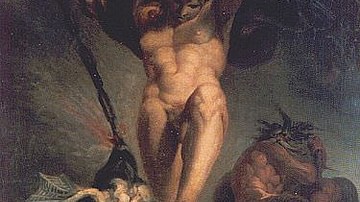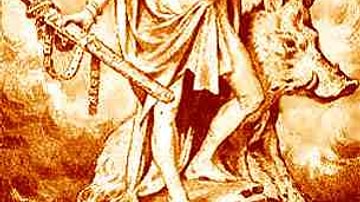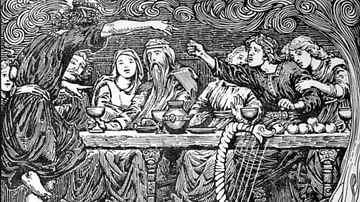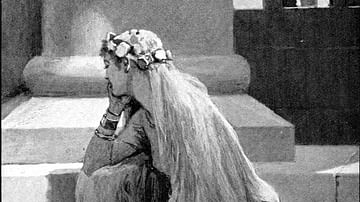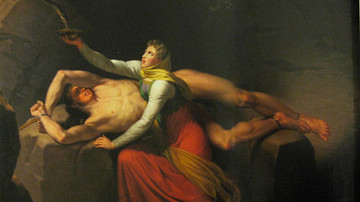Server Costs Fundraiser 2024
Help our mission to provide free history education to the world! Please donate and contribute to covering our server costs in 2024. With your support, millions of people learn about history entirely for free every month.
$3890 / $18000
Video
Norse mythology was the belief of the people of Scandinavia around the Viking age between around 790 and 1100 CE. It consisted of cosmology or story of the beginning of the universe, nine realms of the world tree Yggdrasil and the end of the world known as Ragnarok. What remains of textual sources of Norse mythology is only the very surface of the history, since, at the time, Scandinavia was primarily an oral society. Gods and goddesses were venerated, and archaeology shows personal devotion to specific gods as well as community cult activity.
Like other cultures, there are multiple different versions of the creation myth, and one version is that at the beginning there were 2 realms; one of icy cold called Niflheim and one of fire called Muspelheim, and in between them was Ginnungagap, the empty void. Eventually, chaos and destruction would engulf the world, known as Ragnarok ‘the final destiny of the gods,’ or `Twilight of the Gods.’ It begins with a terrible winter, then the earth sinks into the sea and the wolf Fenrir breaks free and devours the sun. Fenrir is a monstrous wolf and an enemy to the gods — he is known in the myths as the one who maims Týr by relieving him of his right hand, and as the killer of Odin during Ragnarok.
There were two separate groups of gods in Norse mythology, the larger family known as the Æsir and the smaller and more mysterious family known as the Vanir. The term Æsir was used often when addressing the main group of gods. These main gods were mostly connected with the government and war and included gods such as Odin, Thor, Loki, Baldr, Hodr, Heimdall, and Týr. The Vanii were the gods associated with fertility such as Njord, Freyr, and Freyja. After the war between the two groups known as the Vanir Wars or Æsir-Vanir Wars, the two groups were often both referred to as Æsir.
— ATTRIBUTIONS —
You can find all attribution and credits for images, animations, graphics and music here - https://worldhistory.typehut.com/norse-mythology-an-introduction-to-the-norse-gods-myths-and-legends-images-and-attributions-5183
— THUMBNAIL IMAGE —
https://en.wikipedia.org/wiki/File:Mårten_Eskil_Winge_-_Tor%27s_Fight_with_the_Giants_-_Google_Art_Project.jpg
Mårten Eskil Winge / Uploaded DcoetzeeBot
Public Domain
Subscribe to this author
About the Author
![Kelly Macquire]()
Kelly is a graduate from Monash University who has completed her BA (Honours) in Ancient History and Archaeology, focussing on iconography and status in Pylos burials. She has a passion for mythology and the Aegean Bronze Age.
License & Copyright
Original video by Kelly Macquire. Embedded by Kelly Macquire, published on 18 June 2021. Please check the original source(s) for copyright information. Please note that content linked from this page may have different licensing terms.
The video and its description text are provided by Youtube. This website claims no authorship of this content; we are republishing it for educational purposes.


